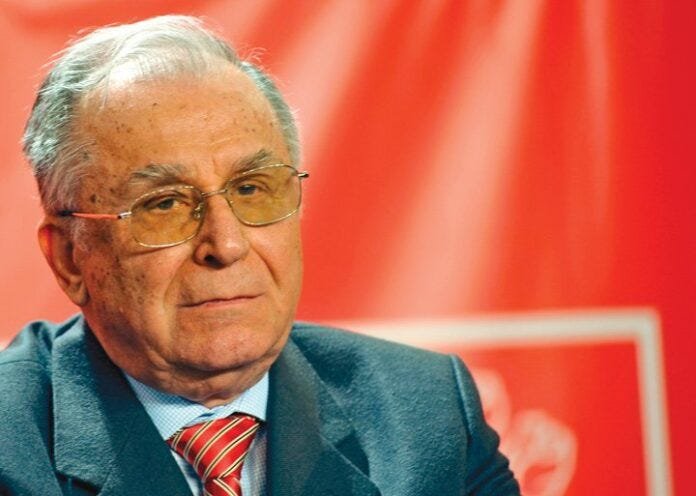Ion Iliescu, Symbol of Romania’s Post-Communist Shift, Dies at 95
Ion Iliescu, the former Romanian president who played a central role in the country’s move from communism to democracy, died on Tuesday at age 95. Iliescu, a key figure in Romania’s modern history, had been hospitalized for lung cancer for two months before his passing. The Romanian government announced that he will receive a state funeral.
From Communist Insider to Revolutionary Leader
Iliescu’s life mirrors Romania’s turbulent political transformation. Once a rising figure in the Romanian Communist Party, he emerged as the leader of the December 1989 revolution that ousted dictator Nicolae Ceaușescu, who was executed on Christmas Day that year. Iliescu then became Romania’s first democratically elected president.
He led the country through critical years, helping to lay the foundation for Romania’s eventual membership in the European Union (EU) and NATO.
“History will judge Ion Iliescu,” said current Romanian President Nicusor Dan, reflecting on Iliescu’s legacy as a pivotal figure of the 1990s transition.
A Legacy of Both Progress and Controversy
While Iliescu gained widespread admiration in the early years of Romania’s new democracy—earning chants like “The sun shines, Iliescu appears”—his later years in power were clouded by controversy.
In June 1990, when student-led protests erupted in Bucharest, Iliescu called in coal miners to quash the demonstrations. Nearly 20,000 miners flooded the capital, leading to violent clashes that left four dead and hundreds injured.
Accusations of Crimes Against Humanity
Despite several attempts to investigate Iliescu’s role in the 1990 violence, charges came only in early 2025, when he was formally put on trial for crimes against humanity. Though he denied all wrongdoing and was never convicted, the events became a lasting stain on his leadership.
The violent suppression of peaceful protests, known as the “Mineriads”, not only undermined Romania’s transition to a market economy, but also scared away foreign investors for years.
Critics argue that Iliescu slowed reforms and protected remnants of the Communist-era elite, prioritizing stability over transformation.
Guiding Romania Toward the West
Despite criticism, Iliescu is credited with forging a political consensus that led Romania to join NATO in 2004 and the European Union in 2007. His diplomatic leadership helped align all major political parties behind Romania’s Western integration.
Iliescu was also the founder of the Social Democratic Party (PSD), which remains Romania’s largest political party. He is the only PSD leader to have won three presidential elections—a feat no successor has matched since his final term ended in 2004.
A Complex Figure in Romanian History
Political scientist Sergiu Miscoiu described Iliescu as both a symbol of anti-totalitarian reform and an object of national admiration.
“Ion Iliescu must be understood in the context of his time,” Miscoiu said. “He stirred anti-totalitarian sentiments in the 1990s, but also enjoyed deep popular support.”
Conclusion: The End of a Defining Era
Ion Iliescu’s death closes a significant chapter in Eastern European history. As the man who helped steer Romania away from dictatorship, while also facing deep controversy, his legacy remains divisive yet monumental.
His role in shaping Romania’s post-Communist path—and its eventual place in the European and transatlantic community—will continue to be debated for years to come.


